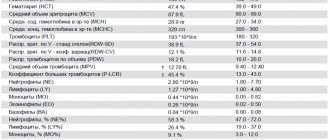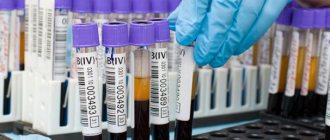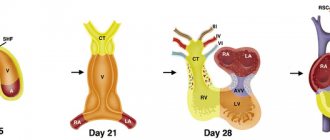EDS (blood test) - what is it? How is it carried out? Why is it needed? To fully understand these issues, it is necessary to refer to some medical information and data provided by a variety of diagnostic laboratories. In fact, understanding what we are talking about is not as difficult as it seems. Almost every citizen of a particular country sooner or later encounters EDS diagnostics. What is she like?
Description
It's simple. EDS - blood test. What is it in general and what diseases is it used to diagnose? The thing is that a similar abbreviation is used to describe the method for determining syphilis in the blood. A kind of analogue of the name of the Wasserman reaction.
In diagnostic laboratories you can see this analysis in the form of the inscription “Reaction to RW”. Many people are familiar with this procedure. Especially women. The population is tested for syphilis not only if it is suspected, but also simply for the sake of checking the body. For example, during pregnancy.
EDS (blood test) - what is it? As already mentioned, a method for diagnosing syphilis in the blood. Or Wasserman's reaction. There are no special features for the patient. How is the analysis carried out?
Indications for EDS
Direct indications for testing blood for syphilis are symptomatic manifestations of the disease:
- Primary syphilis. In the area of penetration of the bacterium (the mucous membrane of the genital organs, anorectal area or oral cavity), a hard chancre appears - a painless erosive compaction, regional lymph nodes enlarge, the temperature periodically rises to subfebrile (37-38℃) values, and neurological symptoms (myalgia, arthralgia) are disturbing.
- Secondary syphilis. It is characterized by syphilitic skin rashes (syphilides) in any area of the body, stable low-grade fever, redness of the tonsils, hair loss, and hoarseness.
Important! It is necessary to donate blood for possible syphilis infection after unprotected intimate contact with a questionable sexual partner.
Routine testing for infection is carried out by:
- catering workers, food industry workers, doctors;
- pregnant women when registering at the antenatal clinic and as part of three perinatal screenings.
- organ donors for transplantation, IVF and blood donors;
- patients who have undergone treatment for syphilis;
- potential hospital patients (in preparation for hospitalization).
A blood test for the Wasserman reaction is carried out in a comprehensive diagnosis of other sexually transmitted infections. It is mandatory to check blood for RW in newborns from mothers diagnosed with syphilis.
Carrying out analysis
The diagnostic technique is extremely simple. Especially for patients. They are required to do a little preparation for submitting biological material, but nothing more. It will be discussed later.
EDS (blood test) - what is it? A test that helps determine the presence of syphilis in the human body. A unique method of diagnosing the disease using blood.
A person comes to the laboratory and donates some venous blood. Next, the laboratory begins to work with the resulting biomaterial. A special solution is mixed with the patient’s blood, then, after some time, the reaction is examined. If it is present, the person has encountered syphilis. Otherwise the patient is completely healthy. Diagnostic time in the laboratory is about half an hour.
Preparing for analysis
How to take a blood test for EDS? More precisely, how should you prepare for the study? The laboratory does not provide any special instructions or recommendations. But to obtain a more accurate result, it is advisable to refrain from smoking and drinking alcohol several days before taking biological material for research.
It is also important to donate blood on an empty stomach. It is recommended not to eat food 8 hours before the test. It is advisable to exclude too spicy, salty and sweet foods from your diet 2-3 days before your visit to the laboratory. This is the only way to achieve maximum results.
Negative analysis
Next, we can talk a little about how this analysis is deciphered. It's not all that difficult to understand. EDS (blood test) - what is this test? It is clear for what purposes it is being carried out. And what it represents, too. But how to interpret the results obtained?
Using the previously stated method, the laboratory will look for antibodies to syphilis proteins in the blood. Blood test (EDS) negative? This means that the human body has not encountered the specified disease. That is, he is healthy. And I never had anything to do with syphilis.
This is exactly the result that patients expect when they take an EDS test. But this is not the only response. What other options might there be after research?
Positive result
For example, a positive EDS blood test result. It occurs when a person’s blood, after mixing it with a special solution, produces antibodies to syphilis.
Accordingly, it can be judged that the patient’s body has encountered a disease. It makes no sense to talk about the norm for this analysis. After all, it shows whether there is syphilis or not.
Typically, laboratories simply provide the public with a printout that tells them whether antibodies to the disease have been found or not. But sometimes clinics offer an extended display of the result.
When do cardiolipin antibodies appear in the blood?
Antibodies to cardiolipin, the presence of which allows the EDS method to diagnose, appear already at the stage of early infection, or during the period of primary syphilis. This time approximately corresponds to 7 or 10 days after the onset of primary affect or chancre. All non-treponemal methods, including the Wasserman reaction, are unable to distinguish between individual types of antibodies and give only the overall reaction of the immune response, and this is their imperfection. It is known that class M immunoglobulins appear first, which classically indicate a rapid response of the defense system to the introduction of a pathogen, and then, after a few weeks, class G immunoglobulins are produced, which in the case of syphilis remain in the patient’s blood for life.
Cell classes
The man decided to take a blood test for EDS. What is this? How is the analysis by cell class interpreted? Understanding this is not as difficult as it seems. People with medical education know that in the presence of a particular disease, the body begins to produce either IgG cells or IgG cells. From them you can easily understand whether a person has encountered syphilis or any other disease.
Decryption can happen like this:
- Recent infection with syphilis. Then lgM antibodies are produced approximately 7 days after encountering the virus.
- A relatively recent disease. If syphilis has been living in the body for about a month, then IgG antibodies begin to be produced. IgG also persists after successful treatment of syphilis. In other words, the presence of such antibodies is not only an indicator of recent infection, but also an indicator of the development of stable immunity to the disease.
- Secondary disease. This is possible if the result is a negative reaction, but there is IgG. The so-called credits are also written nearby. Depending on them, the real result will be interpreted. Either the person simply has a strong immune system, or he gets sick with syphilis again.
What is RPR (Rapid Plasma Reagin) analysis?
When the Treponema pallidum bacterium enters the body, it damages cell membranes, from which infected lipoproteins and phospholipids are released. In response to this, the immune system begins to produce specific antibodies - reagins. Reaction to invasion, i.e. the appearance of antigens occurs 3-4 weeks after infection with syphilis.
The RPR anticardiolipin test looks for reagins produced by the immune system. If they are present in the blood, it means that there is also a treponema bacterium. To reduce the cost of analysis, an analogue of Treponema pallidum, cardiolipin, is used as a phospholipid antigen in EDS.
A blood test includes several stages. Primary, serum is isolated from the patient's blood through defibrination (removal of the fibrinogen protein from the plasma).
Next, the serum is diluted with isotonic water and a phospholipid antigen (cardiolipin) is added. If there is an infection, produced reagins are already present in the blood.
They react with cardiolipin to form a complex. The absence of a reaction means that the immune system does not produce specific antibodies, therefore, there is no infection with treponema.
With a pronounced reaction and the formation of an antigen-antibody complex, flocculation occurs - the formation of flakes (sediment), which prevents hemolysis (the natural destruction of red blood cells - erythrocytes). The results are assessed by the intensity of complex formation, the presence/absence of a reaction and hemolysis.
About credits
Now the answer to the question about EDS (blood test) “what is it” is clear. Its decoding is also more or less clear. What titers can be seen for antibodies of one type or another? And how can they determine whether a person has syphilis? It's simple, you just need to take into account the following indicators:
- with one minus, there is no syphilis;
- with one plus the result is doubtful;
- 2 pluses - weakly positive, the likelihood of disease is low;
- 3 pluses - there is syphilis;
- 4 pluses - strongly positive, recent infection.
In this case, you can carry out any other diagnosis of syphilis. And take into account all the results. If they are also positive, the person is sick. Otherwise there is nothing to be afraid of.
Errors
EDS (blood test) - what is it? A modern, although not entirely accurate, method for diagnosing syphilis in humans. It is worth paying attention to the fact that a positive result may be false. Therefore, there is no need to panic when you see that the body is producing antibodies to the disease.
First, it is recommended to retake the test. Or choose a different method for diagnosing syphilis. EDS is a study that has certain errors.
Secondly, as already mentioned, the presence of antibodies to a disease may mean the development of immunity to the disease. For example, due to the characteristics of the organism.
Thirdly, the presence of bad habits, as well as chronic diseases, can lead to a positive test result. In girls, even menstruation affects it.
Accordingly, EDS is a fairly quick rapid test for syphilis, which has certain errors. 100% accuracy is given only to perfectly healthy people. But in practice, such research is in great demand. Now it is clear how to donate blood for EDS, what it is, how the analysis is deciphered, and what are the factors influencing the accuracy of the study.
Laboratory detection of the causative agent of syphilis
Treponema pallidum (the causative agent of syphilis) belongs to gram-negative bacteria of the spirochete species. In 95% of cases, infection occurs through unprotected intimacy. Contagiousness (infectiousness) is manifested by the concentration of bacteria in the secretory fluids of an infected person (sperm, vaginal secretions) and microscopic damage to the mucous membranes of the partner.
The bacterium enters the intercellular junctions of the endothelium, cells and tissues, and multiplies in the lymph nodes. The high virulence of treponema pallidum ensures the rapid spread of infection throughout the body through the blood and lymph flow.
Treponema pallidum is not detected under a light microscope and does not grow on nutrient media, which excludes conventional microscopic analysis and bacteriological culture (bacteriological culture) from laboratory practice. The bacterium can only be detected in blood serum through serological tests.
RPR in the list of diagnostic methods for determining Treponema pallidum
Serological blood testing is based on the body’s immune reactions: the interaction of antigens (bacteria or viruses) that have entered the blood and Ig immunoglobulins - specific blood plasma proteins responsible for the differentiation and destruction of antigens.
Reference! Antibodies to foreign pathogens are called immunoglobulins, and serological reactions are called antigen-antibody reactions.
Treponemal and non-treponemal tests are used to diagnose syphilis. Treponemal testing is a complex and expensive method using actual Treponema pallidum antigens. They are necessary to confirm the diagnosis in case of false positive results.
The list includes reactions:
- immunofluorescence (RIF);
- immobilization of Treponema pallidum (RIBT);
- passive hemagglutination (RPHA).
Enzyme-linked immunosorbent assay (ELISA) and immunochemiluminescence (ICL) are similar. In non-treponemal tests, cheap nonspecific antigens are used for the antigen-antibody reaction and immunoglobulins are not separated by titers, but their total amount is determined. Non-treponemal studies include RPR, which is used to quickly diagnose syphilis.









